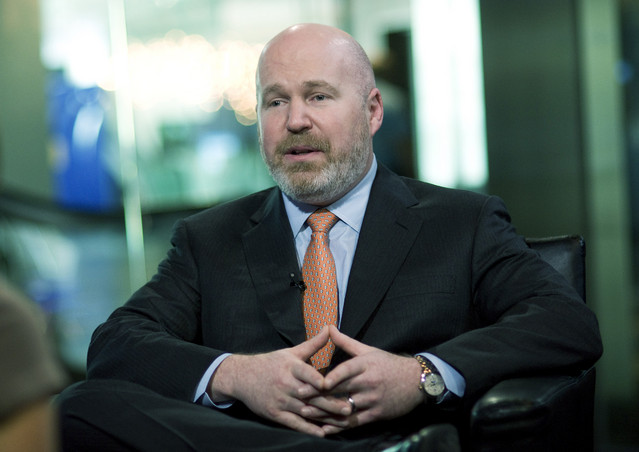by Richard Nield Senior Portfolio Manager, Invesco Ltd., Invesco Canada
For months, Europe has grappled with geopolitical uncertainty in the form of ongoing Brexit negotiations (which face a looming March 2019 deadline) and Italy’s populist coalition government. In this environment, UK companies have appeared less likely to invest – which could lead to lower European growth levels next year.
So what do Brexit doubts mean for our team’s Earnings, Quality, Valuation (EQV) outlook for the UK and eurozone? Let’s begin by dispelling three myths about the area.
Three myths about Europe
1. Myth 1: Europe always underperforms the U.S.
In dollar terms, European equities have outperformed the S&P 500 Index in eight of the last 15 calendar years1 – they just haven’t done so recently. But we believe there are growth opportunities on the horizon. European gross domestic product (GDP) is trending at a 2.3% rate for the year,2 which isn’t all that bad for a region that has struggled with growth of late. The market has reacted negatively to the recent decline in Eurozone Manufacturing Purchasing Managers Index (PMI) (which fell to 53.23 in the third quarter after peaking in the fourth quarter of 2017), and growth is no longer accelerating. However, broader economic sentiment indicators such as business confidence put Europe in position to grow close to 2% next year.4 And, although eurozone growth has moderated, it is still near a decade high. The Invesco International and Global Growth team feels expectations are fairly low.
2. Myth 2: European earnings are not growing as fast as the rest of the world.
Since the market trough in March 2009, European earnings have only grown at half the rate of the U.S. However, when we look toward 2019, consensus expectations project close to 10% earnings growth, similar to developed markets. After witnessing years of underinvestment, we expect European companies to invest in new capital equipment with capacity utilization close to a peak, which we believe will benefit growth.
3. Myth 3: Italy will leave the euro and put the currency union in jeopardy.
Indeed, the Italian coalition government has upset the markets and undermined the European Union (EU) by tripling the targeted budget deficit to 2.4% for 2019 – despite debt/GDP (at around 131%) being the second-highest in Europe after Greece. 5 However, the reality is that over 60% of citizens support the euro in Italy,6 so we feel the risk of Italy leaving the euro is over-exaggerated.
Where are we seeing opportunity?
So, what do Brexit concerns mean for our bottom-up EQV approach? Our UK holdings in the Invesco International Growth Fund and the Invesco European Growth Class feature large, international businesses with average UK exposure of no more than 10% (as of Sept. 30, 2018).
With regard to positioning, we remain overweight financials, as they are relatively inexpensive and we are well-diversified within the space. We believe the expected end of European Central Bank quantitative easing next year, along with still-decent growth and high capital levels, should provide our financials with a good risk-reward balance.
In the third quarter, we also initiated positions in two large-cap European holdings, TechnipFMC and Finecobank.
- TechnipFMC, a merger between French Technip and American FMC, is a well-managed oilfield service company with market-leading positions (0.94% weight in Invesco International Growth Fund and 0.94% weight in Invesco European Growth Class as of Sept. 30, 2018). After a difficult few years for the industry, we are slowly seeing new contract bookings, and while the order backlog is 54% below prior its peak, it is up 15% since the end of last year, as of June. With earnings at or near cycle lows, we believe the company may benefit over the next few years as demand returns and as it delivers on cost-cutting synergies. The balance sheet is strong with no debt, and the shares are very inexpensive on mid-cycle earnings, in our view.
- Finecobank is an Italian high-growth, high-return multi-channel bank, asset manager and brokerage business (0.69% weight in Invesco International Growth Fund and 0.68% weight in Invesco European Growth Class as of Sept. 30, 2018). Its market share of 1.6% is poised to ramp up based on the company’s strong digital platform versus other banks, in our view. Returns are very attractive, in our view, with a return on equity of over 30% and a strong balance sheet. The short-term valuation is not inexpensive at 21 times the 2019 price-earnings (P/E) ratio — but on a three-year view, valuation is closer to 15 times P/E, which we believe will prove to be a good entry price.
The bottom line
In conclusion, we feel that in a momentum-driven market that reminds us of the late 1990s, there is a stronger-than-normal need to have confidence in short-term earnings, even though our approach looks three to five years ahead. We are witnessing more dramatic moves when shares of companies slightly miss expectations. In an environment where U.S. earnings growth might be peaking, we believe our quality growth style might be moving back into favor as companies with higher-than-normal earnings visibility, margin stability, strong returns and balance sheets have recently started to outperform.
Learn more about Invesco International Growth Fund and Invesco European Growth Fund Class
This post was originally published at Invesco Canada Blog
Copyright © Invesco Canada Blog















